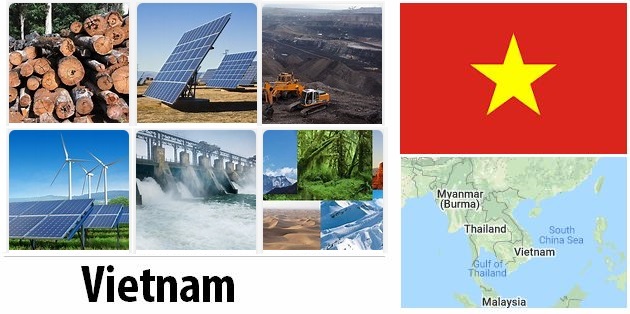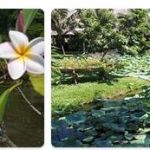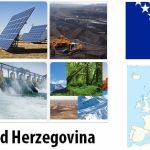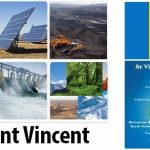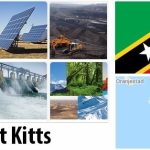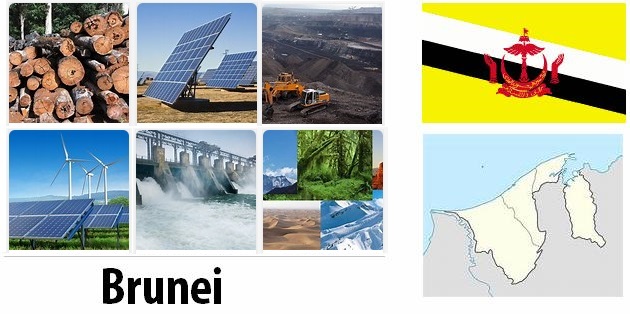Natural resources, energy and environment
Vietnam’s most important natural resources are oil, natural gas and coal. The oil generates an important part of the country’s export revenue. Natural gas and hydropower generate most of the electricity. Biomass – mainly wood and agricultural waste – accounts for around a third of total energy consumption.
In Vietnam there are also deposits of tin, zinc, iron ore, rubies, gold and bauxite (used in aluminum production), as well as copper, manganese and titanium extracted in smaller quantities.
- COUNTRYAAH: Major exports by Vietnam with a full list of the top products exported by the country. Includes trade value in U.S. dollars and the percentage for each product category.
Oil has been mined since 1986, when the first oil field Bach Ho (White Tiger) in the South China Sea was put into operation. The reserves are the second largest in East Asia (after China’s) and strategically more important. The state of Petrovietnam devotes itself to everything from seeking new finds to distribution and is the country’s largest oil producer. Much of the extraction of both oil and gas takes place through joint ventures with foreign companies.
While Vietnam exports crude oil, the country must import large quantities of fuel. The reason is that the country’s capacity to refine the oil is too small.
Large extraction of coal and natural gas
Natural gas has been used for electricity production since 1995, when a gas pipeline to the mainland from the Bach Ho field was completed. New large gas deposits have been found in recent years. Electricity consumption quadrupled in ten years from 2000 and has continued to rise rapidly. Hydropower and natural gas generate most of the electricity, but coal still accounts for almost a third.
- Abbreviationfinder: A popular acronym site in the world covering abbreviation for each country. For example, VM stands for Vietnam. Visit itypeusa for more information about Vietnam.
The coal, which is mainly mined near the Chinese border, has long been the most important natural resource. After a period of stagnation, coal mining has again increased since the mid-1990s. Much of the coal is exported.
Vietnam decided in 2009 to build a first nuclear power plant, in the province of Ninh Thuan, with the support of a Russian and a Japanese company. The first of two planned reactors was expected to be commissioned in 2020. In the fall of 2016, however, the government shut down the nuclear project, which has become considerably more expensive than planned.
Northern Vietnam has an overproduction of electricity, thanks in large part to the large Song Da dam at Bien Hoa, west of Hanoi. The situation is more difficult in the south. It was not until 1994 that electric power could begin to be transferred from north to south via a new line. It has improved the electricity supply in the south, but at the same time industrialization and increased living standards there have led to a rapid increase in demand for electric power. Electricity production is steadily increasing, but still keeps pace with demand with little need.
Severe environmental degradation
During the war against the United States (see Modern History), Vietnam suffered enormous environmental degradation. Around one-sixth of South Vietnam’s surface was then sprayed with herbicides, including the detergent Agent Orange, which was used to more easily detect Vietnamese guerrilla soldiers in the forests. Large areas of forest and arable land were destroyed, not only by poisons, but also by fires and American excavators that wiped out villages, forests and fields.
The United States has supported social projects related to Agent Orange, which, among other things, caused severe deformities and diseases such as cancer. In 2012, for the first time, a remediation project with American support was also initiated. The decontamination is done at a former US air base in Da Nang, where the poison is stored.
In the early 1940s, nearly half of Vietnam’s area was covered with forest. After heavy felling, the forest area in the 1990s was down for about a quarter. In 1992, all exports of timber and timber products were banned. The ban was later lifted, but the state is still trying to limit forest harvesting and plant new forest. Today, the proportion of wooded area is approaching half the land area again.
Industry expansion in Hanoi and Ho Chi Minh City creates serious environmental problems. Industrial emissions are not sufficiently cleansed. Agriculture’s increased use of artificial fertilizers, pesticides and other chemicals poses a health risk. The existing environmental laws are often not complied with.
FACTS – ENERGY AND ENVIRONMENT
Energy use per person
668 kilos of oil equivalent (2013)
Electricity consumption per person
1439 kilowatt hours, kWh (2014)
Carbon dioxide emissions in total
166 911 thousand tonnes (2014)
Carbon dioxide emissions per inhabitant
1.8 tonnes (2014)
The share of energy from renewable sources
35.0 percent (2015)
2010
October
Clinton visits Vietnam
US Secretary of State Hillary Clinton visits Vietnam.
August
The head of Vinashin is arrested
The government seizes Pham Thanh Binh, chief of the shipbuilder Vinashin, which is one of the country’s largest state companies. He is accused of nearly bankrupting Vinashin (see also Finance).
May
Increased oppression against dissimilar thinking
The human rights organization Human Rights Watch accuses Vietnam to step up repression of dissent on the Internet.
January
Additional activists convicted
Le Cong Dinh (see June 2009) is sentenced to 5 years in prison while three other activists face between 7 and 16 years in prison, accused of trying to overthrow the government.
